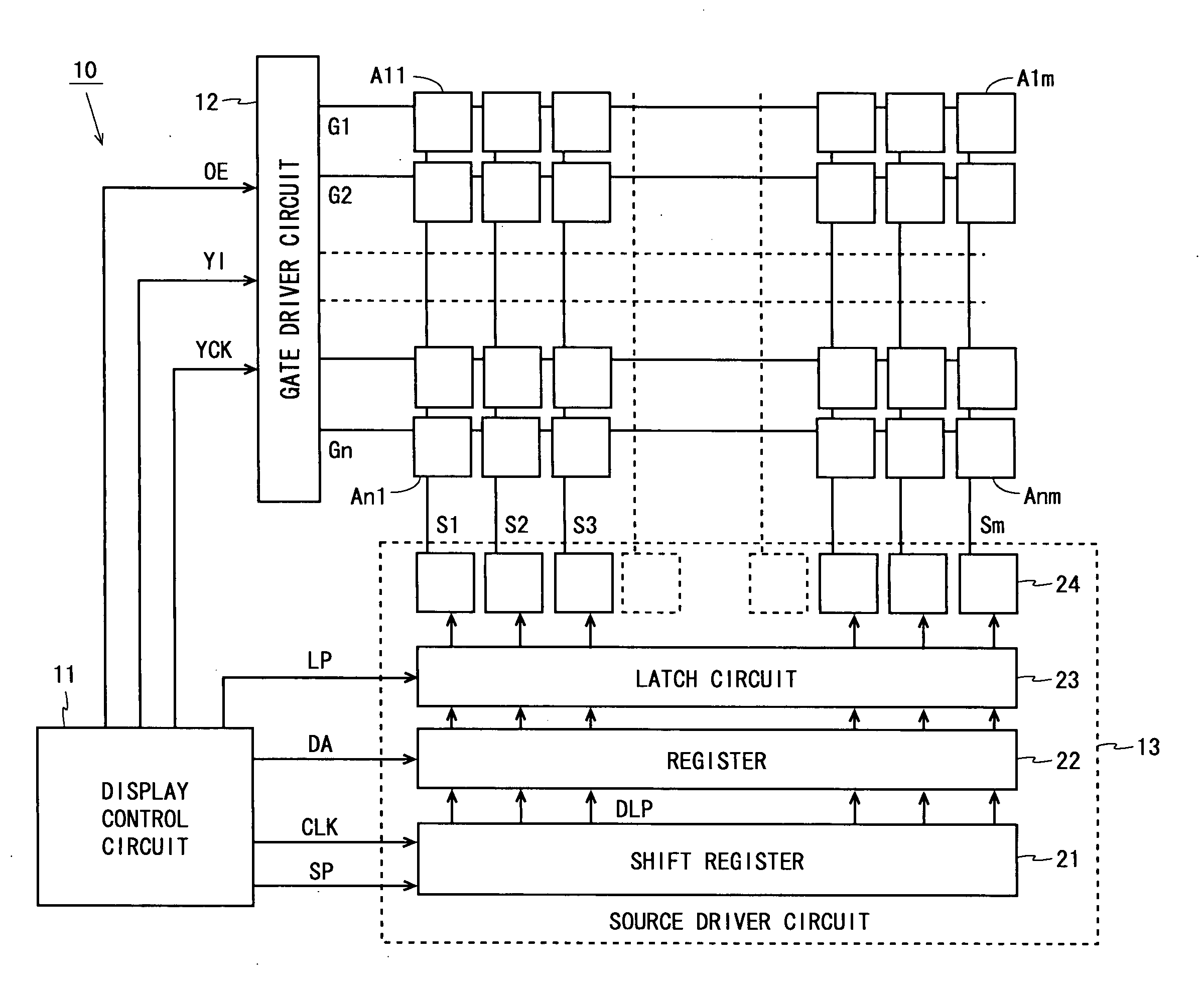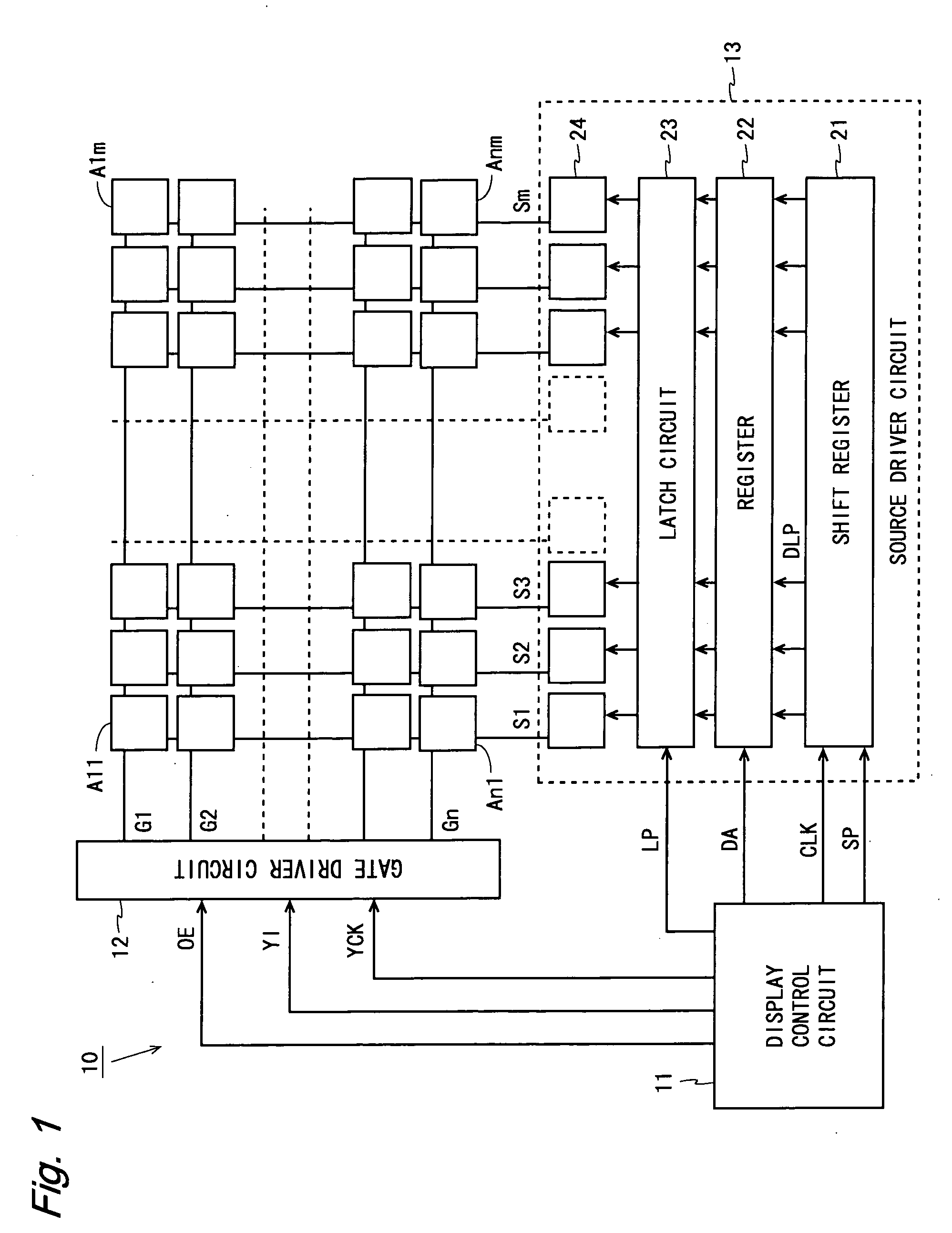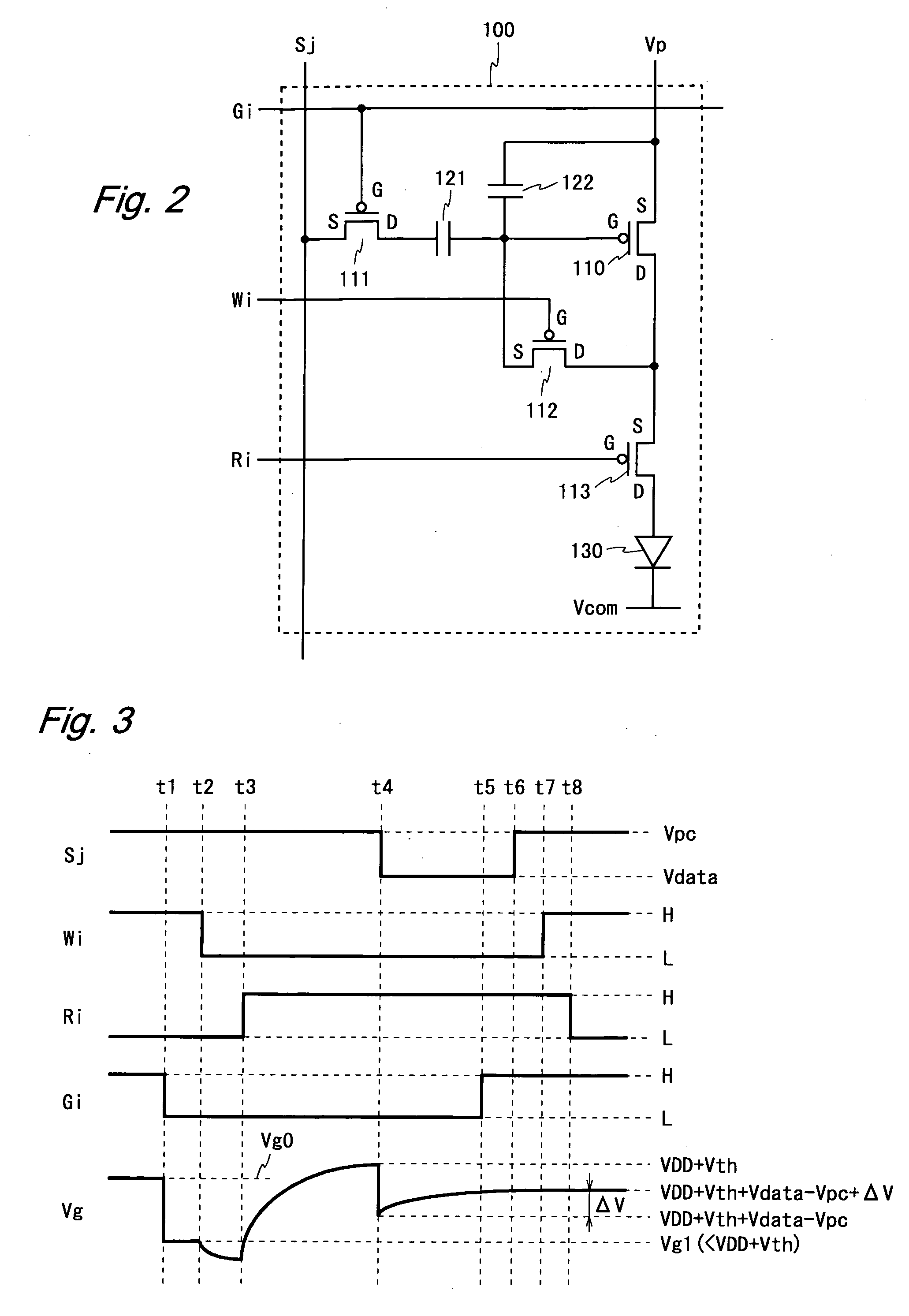Display device and method of driving the same
a display device and drive circuit technology, applied in the field of current-driven display devices, can solve the problems of difficult design of pixel circuits and drive circuits, difficult suppression, and easy fluctuation of luminance and voltage between the luminance and voltage of organic el elements, and achieve the effect of reducing the potential of the control terminal of the drive elemen
- Summary
- Abstract
- Description
- Claims
- Application Information
AI Technical Summary
Benefits of technology
Problems solved by technology
Method used
Image
Examples
first embodiment
[0077]FIG. 2 is a circuit diagram of a pixel circuit included in a display device according to the first embodiment of the present invention. A pixel circuit 100 shown in FIG. 2 includes a driving TFT 110, switching TFTs 111 to 113, capacitors 121 and 122, and an organic EL element 130. All of the TFTs included in the pixel circuit 100 are of a p-channel type. The pixel circuit 100 is also described in Patent Document 1 (International Publication Pamphlet No. WO 98 / 48403).
[0078]The pixel circuit 100 is connected to a power supply wiring line Vp, a common cathode Vcom, a scanning line Gi, control wiring lines Wi and Ri, and a data line Sj. Of them, to the power supply wiring line Vp and the common cathode Vcom are respectively applied fixed potentials VDD and VSS (note that VDD>VSS). The common cathode Vcom is a cathode common to all organic EL elements 130 in the display device.
[0079]Terminals of the TFTs denoted as G, S, and D in FIG. 2 are referred to as a gate terminal, a source ...
second embodiment
[0101]FIG. 5 is a circuit diagram of a pixel circuit included in a display device according to the second embodiment of the present invention. A pixel circuit 200 shown in FIG. 5 includes a driving TFT 210, switching TFTs 211 to 213, a capacitor 221, and an organic EL element 230. All of the TFTs included in the pixel circuit 200 are of an n-channel type. The pixel circuit 200 is also described in another application (Japanese Patent Application No. 2008-131568) having a common applicant and a common inventor with the present application.
[0102]The pixel circuit 200 is connected to a power supply wiring line Vp, a common cathode Vcom, a scanning line Gi, control wiring lines Ri and Ui, and a data line Sj. Of them, to the power supply wiring line Vp and the common cathode Vcom are respectively applied fixed potentials VDD and VSS (note that VDD>VSS). The common cathode Vcom is a cathode common to all organic EL elements 230 in the display device.
[0103]In the pixel circuit 200, between...
third embodiment
[0128]A display device according to the third embodiment of the present invention includes a pixel circuit 200 shown in FIG. 5, as does a display device according to the second embodiment. The display device according to the present embodiment drives the pixel circuit 200 according to a timing chart (FIG. 9) different from that in the second embodiment.
[0129]FIG. 9 is a timing chart showing a method of driving the pixel circuit 200 in the display device according to the present embodiment. As shown in FIG. 9, in the display device according to the present embodiment, during the period from time t4 to time t5 (mobility compensation period), the potential of a data line Sj is a reference potential Vpc which is higher than a data potential Vdata. Except for this point, the timing chart shown in FIG. 9 is the same as that shown in FIG. 6.
[0130]As such, in the display device according to the present embodiment, after the potential of a control wiring line Ui is changed from V2 to V1 (a p...
PUM
 Login to View More
Login to View More Abstract
Description
Claims
Application Information
 Login to View More
Login to View More - R&D
- Intellectual Property
- Life Sciences
- Materials
- Tech Scout
- Unparalleled Data Quality
- Higher Quality Content
- 60% Fewer Hallucinations
Browse by: Latest US Patents, China's latest patents, Technical Efficacy Thesaurus, Application Domain, Technology Topic, Popular Technical Reports.
© 2025 PatSnap. All rights reserved.Legal|Privacy policy|Modern Slavery Act Transparency Statement|Sitemap|About US| Contact US: help@patsnap.com



